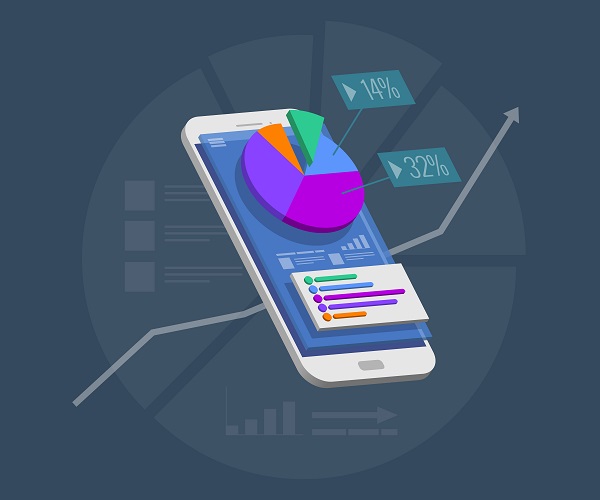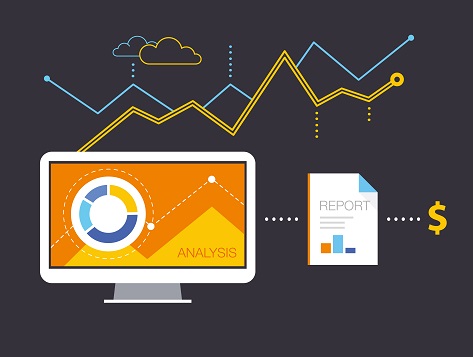Category: Digital Transformation
In 2017, technology played a crucial role in disrupting most of the brick & mortar based business models, and the real-estate industry was no different. Meanwhile, the national unemployment rate fell to a 16-year low of 4.3 percent in July 2017, and recruiting and retaining employees became increasingly difficult. In this environment, many companies have started riding the digitalization wave and consider technology to be a growth-driver.
Businesses are leveraging upcoming technology to boost their operational efficiency, staff productivity, stakeholder relationships, and in-turn sales, but they still have miles to go with respect to reaching a point of consolidation. It is, therefore, important to understand some of the major shifts in this space, to stay ahead of the curve.
Chatbots for superior customer service
Chatbots, also known as conversational agents, are essentially digital employees that can not only answer simple customer service questions instantly, but also seamlessly hand a customer over to live staffers when necessary.
According to a study by the Aspect Software Research, 44% of consumers said they would prefer to interact with a chatbot over a human customer service representative. Surprising? Not really. Chatbots can leverage internal and external databases to personalize interactions and provide specific data to each prospect, thereby resulting in higher lead conversions. They are available 24/7 to handle customer queries and can be programmed to push promotions or products depending on customer requirements. Also, by taking on routine, repetitive tasks, chatbots free time for real estate agents and other staff to focus on more complex tasks.
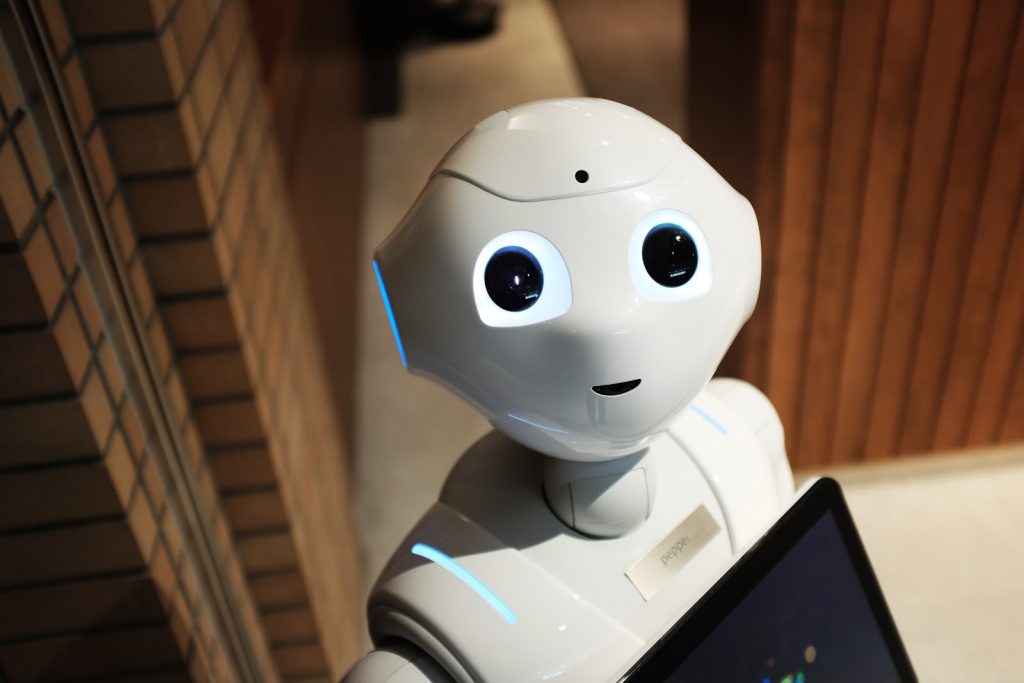
The universality of Mobile
In 2017, NAR reported that 58 percent of buyers found their home on mobile. Mobile usage is expected to continue to rise in 2018 as more and more Millennials and Generation Z buyers enter the market, and therefore it is not enough to have just a mobile-friendly website. The mobile app market is exploding; in 2017, there were 197 billion app downloads, and that number is expected to triple in the next three years. Real-estate agents are investing more in apps while looking to access IDX data from their phones or tablets. Estate agents are also looking to use mobile marketing to build an online presence, connect with local neighborhoods and create communities for a more targeted approach to lead generation.
Virtual walk-throughs to make the difference
AR and VR are two technologies that can take customer experience and involvement to the next level. A recent Goldman Sachs research report predicts that the VR and AR market in real estate will reach at least $80 billion by 2025. Real estate owners and developers can use a combination of AR and VR, known as mixed reality, to enable their clients to remotely view properties around the world. They can create a 360-degree immersive experience for the potential client and offer multiple finished site options. This can also help both agents and customers save time by speeding up the buying process. However, like any new technology, companies need to consider the return on investment from potential investments in these technologies. In addition, companies would benefit from understanding the flexibility and scalability of these technologies at various stages of use.
Can IoT have an impact?
Not only has IoT managed to become the buzzword after the “Cloud”, it has also managed to bring a revolution with Smart Homes that are intuitive and customizable enough to match the taste of the homeowner. Such homes come with everything that is electronic inside your house, connected to the internet and controllable with your handheld mobile devices. The emerging markets are using the potential of Smart Homes to increase comfort and to consolidate data to make homes eco-friendlier. By having IoT enabled homes, real estate companies will get another chance to rewrite how luxury is experienced daily. The sky is the limit for interior experts to make breathtaking functional homes using IoT.
Did anyone say Big Data & Analytics?
Big Data & Predictive Analytics is the key to every future product that a company would roll out because they know what their user specifically likes or dislikes and they have enough data points to ascertain their assumptions as facts. It will play an essential role in helping real estate companies improve deals and investments, mitigate risk, better understand tenants and their needs, and open up new profitable business possibilities. Such data would also help real estate companies target users with new real estate products which can increase sales exponentially. It would help build a loyal customer base as well.
We are still in the nascent stage of Predictive Analytics for real estate, but the opportunities for companies that embrace this technology in the right way is infinite.
Marketing automation and project management tools
According to a study, salespeople spend just one-third of their day actually talking to clients. They spend 21% of their day writing emails, 17% entering data, another 17% prospecting and researching leads, 12% going to internal meetings, and 12% scheduling calls. The automation of various tasks such as scheduling and the use of CRM tools can enable real estate agents to spend more time building relationships and less time on routine administration tasks. Tools like HubSpot and GetResponse can also help companies leverage online leads. The decisive driver for this trend is above all the possible simplification and acceleration of management processes.
Is Blockchain the future?
The Blockchain is basically used to validate all transactions and add the transactions to the stack. (If this sounds too complicated, head over to a Medium post here to read about Blockchain in more depth).
Imagine a user gets to sign all his documents digitally and doesn’t have to keep a physical record! Now, all this is possible using Blockchain, but this technology is in its nascent stage. As more buyers turn to cryptocurrency for their financial transactions, building owners will need to accept cryptocurrency to stay relevant. There are also emerging services that provides landlords and tenants a way to pay and receive rent in cryptocurrency.
To Sum Up
We discussed many of the technology trends in the real estate industry, but let’s not forget about the flying saucers. Well! Yes, we are talking about drones. Drones are presently being used for security and surveillance purposes, and they are also being used by real estate companies – More and more real estate professionals are turning to drone photography and videos to better market their listings. Drone photography is especially useful for large, unique properties that don’t photograph well from the ground.
We must ensure that we embrace new technology as soon as possible because the time required for a new tech to become a common tool is really short. Therefore real estate companies should quickly leverage that little time to capitalize on their market share perfectly.
Stay up to date on what's new

Featured Blogs
Stay up to date on
what's new



Talk To Our Experts
Bill Gates: ‘A.I. can be our friend’ | CNBC
“AI can be our friend,” says Gates, speaking with “Hamilton” composer Lin-Manuel Miranda and his wife, Melinda, at Hunter College in New York City on Tuesday.
5 Things CEOs Should Start (and Stop) Doing in 2018 | Inc.
With the new year comes a new set of business trends leaders need to be monitoring. What will deliver the biggest impact this year?
How Cloud Computing Is Changing Management | HBR
How will management be changed by the most impactful information technology of our time: cloud computing. What does it allow us to do differently, and how will that change the way we do things in the future?
Innovation shapes the future of transportation technologies | Bloomberg
Together with new software and hardware technologies, including machine learning, blockchain, and the Internet-of-Things, today’s emerging mobility innovations and technologies could allow consumers to move more seamlessly between different modes of transport, as well as improve how the system is managed and controlled, with significant benefits to those who live and work in cities.
Google’s Vision for Mainstreaming Machine Learning | The Next Platform
Google has been a vocal proponent of the idea of democratizing AI by making it easier for mainstream businesses to use.
Stay up to date on what's new

Featured Blogs
Stay up to date on
what's new



Talk To Our Experts
Automation in the retail space improves efficiency, enhances the quality of service, and reduces the cost for all stakeholders. Retailers who realize this fact strive to offer innovative products and solutions, based on automation technology, to differentiate themselves from competitors.
Here are some of the ways in which retailers leverage automated solutions to optimize their operations and cut costs.
Digitalization of Tasks
Digitalization boosts the efficiency of manual and tedious, time-consuming internal tasks. While most progressive retailers have already applied IT applications and solutions in a big way, the emergence of IoT has given rise to newer solutions that take efficiency and quality improvements to a whole new level.
IoT based solutions like leveraging components such as RFID tags, NFC, sensors, and smart devices are primed up to disrupt the retail space in a big way. Retailers apply such solutions in almost all retail functionalities, including product search, checkout, analytics, inventory management, security, PoS, and vending machines.
NFC based payments systems, for instance, facilitate contactless payment systems, speeding up the process considerably, and doing away with queues.
Amazon GO, the checkout free, fully automated grocery store in Seattle offers a prototype of the future store. The store uses cameras and sensors to track what shoppers remove from and place back on the shelves. Amazon bills the customer automatically when they leave the store, using the credit card stored on file. Check out lines, often the major pain point in a retail store, become superfluous.
Starbucks’s “Order & Pay App”, allows customers to pre-order items when on the move. The order is ready when customers enter the store, sparing them the hassles of having to stand in a line. The app, in essence, replaces the POS terminal.
Retailers who invest in such solutions reap huge savings as a result of reduced employee and infrastructure costs. They also gain through increased sales resulting from increased customer satisfaction.
Automation of Key Processes
Automation of critical processes such as inventory control, filling out employee timesheets, invoicing, entering information from various PoS terminals to the accounting platform, financial management, point of sale transactions, etc., can improve efficiency and bring about big cost savings. An integrated point-of-sale system, for instance, spares the need to manually key in transaction information into the card reader or other systems.
Many retailers have identified robots as a key tool to automate their processes. Evidence on hand suggests big efficiency gains and cost savings through the implementation of such innovative automation solutions.
A case in point is Walmart that has patented the use of robots in retail stores. Robots offer an effective and reliable solution to key issues such as insufficient staffing during peak hours, cleaning messy aisles instantly, and identifying theft with precision. Robots are excellent workers, and an HR department’s dream-come-true; they do not need a vacation, never get sick, arrive at work 100% trained, and do not slack. The deployment of such robots has saved millions of dollars for Walmart, in the form of reduced HR costs.
Another success story that retailers can set as a benchmark is that of Amazon’s Kiva robots. Amazon deployed these robots across its warehouses, in 2014, to automate the retrieving and packaging process. Amazon has already saved about $22 million per fulfillment center by deploying these robots, according to Deutsche Bank.
There is the added benefit of automated technologies attracting youth. A recent study by Fisch Restaurant estimates nearly one out of three customers in the 18 to 24 age group prefer ordering from the drive-thru at restaurants because “they don’t feel like dealing with people.” Likewise, McDonald’s automated ordering kiosks are a rage across Europe, relegating manual ordering to the second spot.
Personalize Customer Experiences
A major objective of applying automation technology is to enhance customer experience. Customers are the lifeblood of any business. In today’s age where choice is plenty, customers who feel dissatisfied or have to put up with difficulties to complete the transaction will leave. As such, retailers strive to create high-value, personalized interactions with customers.
The first step towards facilitating the customer is to understand their preferences and requirements. Today’s customers demand highly personalized services. Research by TimeTrade reveals 36% of shoppers do not like to wait for items to ship, 30% of shoppers prefer advice on what products to buy, and 90% of customers will make a purchase when they receive assistance from a knowledgeable store associate.
Retailers may personalize each customer’s experience by harvesting the growing volumes of customer data available across social and other channels.
Retailers could use such data to offer location sensitive offers. In the past, retailers strove to deliver contextual product recommendations. Today, they strive to rationalize the shopping opportunity. 7-Eleven, the global convenience brand targets customers based on location and weather and delivers customized and time-sensitive offers. For instance, if it has started raining in the city or a specific area, the company may offer discounts on umbrellas to customers who are outside their homes, and in the vicinity of the stores.
Lowe is all set to introduce LoweBots – multilingual, autonomous customer assistance robots. The pilot program has been announced in 11 locations across the San Francisco Bay area.
Personalizing customer experience goes far beyond creating brand loyalty and increasing sales. By understanding the customer, the retailer can target and optimize the effort and investment on the customer, without wastage. For instance, if a customer is known to prefer shopping alone without the aid of a salesperson, the retailer can spare the time and cost associated with deploying the salesperson to serve the customer.
Integrate the digital ecosystem with the real-world shop
The most common manifestation of integration of the digital ecosystem with brick and mortar shops are customer apps which aid the shopper as they shop in the physical store. Such apps make shopping easier by listing detailed product features, offering demo videos, and providing customized geolocation-based offers. Such apps also facilitate omnichannel sales. The shopper, may, for instance, opt to shop at the store and get the product delivered through an e-commerce channel.
Retailers need to complement such apps by installing beacons to identify customers who enter the store premises. They could then personalize the experience based on the customer’s preference and demographics. For instance, leading brands such as Sephora and American Eagle identifies each customer to deliver discounts on their birthdays.
Retailers would also do well to take the transaction to the customer without them having to wait in a long, slow-moving checkout queue. Even if red-hot IoT based technologies such as “Amazon’s Go cashless store” is beyond a small retailer’s budget, they can still adopt the Tablet PoS system that allows their staff to check out customers in aisles, doing away with the cumbersome check-out queues. There could also be a facility for online app-based checkout.
Examples of retailers who have applied innovative new automation-based products to enhance customer experience are many. Westfield London, for instance, applied an RFID technology driven smart card system, enabling customers to park their cars without needing a ticket. This is a big improvement over the manual process of refunding parking tickets, sparing the hassle of customers having to present the parking tickets and claim a refund from the store.
Likewise, augmented reality chat bots not just enliven the customer service experience, but also offer greater insights into the customer, reducing the effort and time for the customer service agent.
Audit and Redesign Internal Procedures
A sure shot way to boost internal efficiency and reduce costs is by reducing internal processes by adopting Lean methodologies.
The prerequisite is to conduct a thorough audit to identify supply chain strengths and weaknesses and identify and quantify waste. Retailers can optimize inventory, and pinpoint other areas of improvements.
Constructing an end-to-end lean value stream flow, focused on minimalistic procedures, improves transparency, and makes it easier to review and eliminate avoidable procedures. It creates a standardized workflow with all glitches and kinks ironed out, while co-opting abnormal workflows, catering to all contingencies such as a power failure which results in many POS terminals going down.
Automated retail workflows come integrated with analytics and a CRM suite, creating a highly powerful system, and facilitating further cost-saving methods such as just-in-time inventory, and real-time stocking.
Optimize the Workforce
Automated algorithmic-based labor scheduling tools calculate store workload and optimize staffing, with a high level of accuracy. Custom made algorithms consider factors such as store format, operating hours, backroom configurations, labor regulations, ergonomic considerations, and all other factors, to schedule shifts seamlessly. Such automated systems optimize staff at peak hours and ensure they remain at their productive best. It also reduces absenteeism. The investment is such a solution also delivers a big motivation boost for the workers, reducing turnover rates and decreasing HR costs considerably.
An advanced workforce optimization software, powered by advanced analytics, integrates the customer journey with the employee’s schedule. For instance, if an employee has already struck up a relationship or a rapport with a customer, the employee is assigned to the same customer as far as possible. Such software also ensures high levels of compliance to deliver operational control and business confidence.
Optimize Merchandising
Retailers do not make money by blindly stockpiling inventory. The inventory has to sell. When introducing a new product, smart retailers ask pertinent questions such as “Will the product sell?” “Can the store make money selling the product?”, and so on.
Having introduced a product, a retailer’s prime focus is to optimize the handling of the product inventory; the ordering processes has to be streamlined by identifying the most optimal order-quantity and should be integrated with the sales forecast to eliminate stock-out situations. A good, automated inventory management suite automates all these processes, boosting efficiency and reducing costs.
Automating the merchandising and product exposure process offers retailers the infinite capabilities offered by machines, as opposed to the finite capabilities of a human employee. It also facilitates easy integration of disparate data sources, and comprehensive analytics based on live data. Customers who enter the store are presented with the most optimal inventory, in the best possible way. The analytic engine, could, for instance, draw up the price-point resulting in maximum sales, and tweak the pricing and merchandising strategy accordingly. The net result is the elimination of wasteful trial-and-error methods and saving time. It also ensures the exposure of more products to more people, increasing sales.
Embrace analytics to improve processes
The application of IoT based sensors has taken data analytics to a new level. Retail analytic solutions now aggregate data from video camera feeds, beacons, Wi-Fi, POS systems and other components, and subject such data to big data analytics.
Retailers could gain valuable insights from such analytics. They could measure various elements in the buying process, such as the products each customer inspected in detail, tried, and compared. This information, available in easily digestible reports and graphs, allows retailers to optimize their inventory, eliminating slow-moving inventory. They could also fine-tune prices to boost uptake of inventory. More importantly, such processes become automatic and precise, with a high degree of accuracy, reducing the costly trial-and-error methods usually associated with the processes.
Mindtree’s 2017 study, “Sixth Sense of Retail“, reveals how rapidly evolving digital trends such as social media, mobile applications, and automation reshape the way retailers engage with customers. About 51% of young shoppers (16-24) are comfortable with automated technologies and would visit robot-driven stores, but as high as 78% of older shoppers (55+ years of age) were apprehensive about this trend. Likewise, while 44% of men, cutting across age groups are comfortable with automated technologies, only 30% of women are similarly comfortable. As such, retailers would do well not to blindly embrace automation, just because someone else is also doing it. Rather, they should study their business, understand their customer, and apply automated technologies judiciously.
Stay up to date on what's new

Featured Blogs
Stay up to date on
what's new



Talk To Our Experts
Improving the customer experience is the mantra for survival in today’s highly competitive business environment. More and more businesses have identified machine learning as a reliable tool towards this end.
Machine learning is in essence software coded differently to traditional software. Rather than a long list of if-then-else statements typical of traditional software, machine learning predicts what humans would do given a specific set of inputs.
Currently, marketers and others leverage machine learning to further customer experience through improved personalization, enhancing the computer vision, improving natural language, greater decision support, through analytics optimization, and augmented analytics.
1. Machine Learning Aids Personalisation
Today’s highly pampered customers prefer and even demand personalized engagement and experiences. Machine Learning facilitates it to the hilt. Data and analytics allow marketers to understand customer preferences. Using machine learning in combination with new data sources from the Internet of Things (IoT,) telematics, geolocation beacons, and social data improve the insights.
Several marketers now apply machine learning based algorithms to understand the nuances of their customer’s preferences and engage them on their terms. Marketers use such algorithms to develop highly relevant marketing campaigns, such as a matching audience profile with highly targeted video content. These steps improve the call-to-action.
Customers receive tailored offers rather than irrelevant non-contextual offers. Such non-contextualized offers have a very low probability of conversion.
Segmentation gets better. For instance, insurance companies do not have to go by general assumptions or time-honored conventions to offer the highest automobile insurance premiums to a 16-to-25-year-old male. They can factor in everything specifically related to the customer, and tailor the premium based on individual rather than class factors.
The creation of such relevant content is the godsend at a time when over 90% of online users in the U.S. and Europe feels advertising is more intrusive today compared to two years ago.
Related Infographic: Machine Learning- Deciphering the most Disruptive Innovation
2. Machine Learning Facilitates Computer Vision
Machine Learning technology detects everything and anything, from objects and people to complex scenes within the images and videos. Applying the technology to enhance the quality of digital assets is a sure-shot way to win the customer’s heart.
One big success story is Twitter’s Magic Pony, which leverages machine learning technology to make pixelated images sharper, and enhances the quality of video captured on mobile phones in poor lighting conditions. Apart from delighting the customer, the spin-off benefit of Twitter is lower data usage, and by extension improved streaming abilities.

3. Machine Learning Aids Natural Language Processing
The next big thing revolutionizing human interactions with computers is speech recognition technology. The ability of computers to recognize human speech and act on it not only spares the hassles of keyboard typing but also unlocks a host of new possibilities. While speech recognition technology has been around for a while, the application of advanced machine learning technologies has made the system highly accurate, with error rates far lower than humans. Google’s Cloud Speech API now recognizes over 80 languages and variants, with a high level of accuracy.
Marketers can, and are leveraging advanced linguistic data and cognitive technologies spawned by speech recognition capabilities to create highly engaging content, targeted at the customer. In a sense, it furthers the cause of personalization in a big way.
Marketers benefit from natural language capabilities in myriad other ways also. A case in point is the intuitive new tool launched by Relative Insight, a UK based start-up. The tool converts natural language into data, offering marketers a wealth of information to connect with specific audiences instantly and deeply.
4. Machine Learning Improves Decision Support
Machine learning allows the marketers to predict the future. The “machine” becomes capable enough to predict the customer’s likely course of action, based on the data at his disposal, and his present behavior. The market is now flooded with several digital tools and services which provide advanced recommendations on this front.
On the anvil is “copyless paste,” where machine learning will save users time by proactively offering to share information between apps. Marketers will leverage the concept further to offer proactive product suggestions. Integration with other systems also offers the scope for proactive and automatic delivery.

5. Machine Learning Facilitates Analytical Optimization
Businesses leverage the immense analytics opportunities offered by machine data to fine-tune their operations, deliver new business models, and offer new products and services in tune with customer demand. The insights gained, predict not just how a customer may behave or act, but also how the competition may move in the future.
One sector where machine learning algorithms are already in widespread use is the financial sector. Financial services companies use various machine learning algorithms such as random forest and gradient boosted models for a host of applications, from predicting the probability of being ranked at the top of aggregator portals to predict midterm cancellation rates on policies, and more. These applications have a direct bearing on customer satisfaction. For example, banks and financial institutions predict volumes for credit card lines, to adjust rates and terms, and thereby attract the right type and volume of customers for the specific product.
Related Reading: Top Artificial Intelligence Trends to Watch Out for In 2019
6. Machine Learning Facilitates Augmented Analytics
The scope of machine learning improves with the development of technology. Neural networks support better classification and forecasting, decision trees support more complex rule and relationship-based customer experience programs. All these improve the organization’s ability to support complex decisions, forecasts, and optimizations.
Augmented analytics, which co-opts these latest and emerging technologies, combines various elements of the ecosystem, such as data preparation, business intelligence, predictive analytics and machine learning capabilities into a single, automatic and seamless process. Enterprises would be able to cleanse their data easily, to uncover latent insights and patterns.
Today’s huge data create millions of variable combinations impossible to process manually or even with traditional tools. Augmented analytics, powered by machine learning, deliver quicker insights, reducing customer frustration.
What exists now is just the tip of the iceberg. The future holds a world of possibilities. A case in point is the fragmented nature of the machine learning ecosystem being all set for a big churn. Increased competition, the hyper-fast paced changes in technology, and the proliferation of big data at an alarming frequency force many open source machine learning libraries, algorithms and frameworks to join forces and deliver a better deal to their customers. The lower-level personalization commonplace today will make way for a more robust collaborative filtering, delivering a much higher degree of personalization and contextualization than present levels.
Side-by-side, the machine learning ecosystem is becoming increasingly easier to use, and more affordable. Hitherto, only enterprises with large analytics teams could really afford to play around with machine learning. The advent of various solutions delivered in a cloud-based subscription model makes the power of machine learning available to the masses, including start-ups, freelancers, and even individuals.
Marketers and brands can leverage the improved ecosystem to generate a better picture of their customers’ true context, and serve them better. Simply put, customers will get better food, movie, music, travel, product and purchase recommendations.
Related Reading: AI To Solve Today’s Retail Profit Problems
Stay up to date on what's new

Featured Blogs
Stay up to date on
what's new



Talk To Our Experts
Artificial Intelligence (AI) is the simulation of human intelligence processes with the aid of machines. These machines primarily include computer systems and tools that carry out learning, problem-solving, reasoning and perception.
Customer service is one area where AI tools and technology can be used efficiently. As per a recent study, it is estimated that nearly 85% of the customer interactions will be handled without the presence of a human agent in next three years. There are approximately 38% of the enterprises that are using AI and the number will grow to 62% by the end of 2018. AI has the capability to accomplish the following set of tasks and activities in customer service and interactions.
Pre-emptive Action
AI embedded monitors can provide the customer service team with the ability to analyze the primary customer issues. The systems can offer real-time support to the customer for the resolution of such issues. The huge clusters of web applications can be gathered and studied to resolve the issues even before their occurrence. This empowers the business organizations to reduce the customer abandonment rates and enhance the level of customer engagement.
Messaging Applications
The use of messaging applications is not restricted to connecting with friends, family, and colleagues. The brands are using these applications for customer interaction and the usage is set to increase further. The use of social media applications and in-house messaging applications allows real-time interaction with the customers and thus resolve their queries and issues.
One-time Training
The expenditure on hiring the customer service agent and training the member is quite high. It is also necessary to organize training sessions at regular intervals. However, with the use of AI platforms, a one-time training is sufficient which in turn would bring down the costs to a huge margin.
Related Webinar : Artificial Intelligence in layman’s termsNon-stop Services
Customer service agents cannot be made available for a non-stop period of time. The human resources work for specific hours in a day and may remain unavailable at the time of an incident. These limitations can be resolved by the use of automated support and customer service tools which interact with the customers at any hour of the day. The queries and incidents reported by the customers are automatically recorded and a suitable response is also provided that matches the reported query.

Self-service Options
A recent customer service study revealed that over 72% customers do not prefer phone calls for the resolution of their query or issue. Self-service options for customer service are on a rise and the use of chat-bots and forums have rapidly increased. AI has enabled the easy development and usage of such options. The companies that are still not utilizing such platforms will be required to incorporate the same in the future for enhanced customer relationship management and service.
Reliability & Scalability
Customer service and interaction have a great role to play in customer engagement and relationship management. According to a survey, 42% of the customers increased their purchase after a good customer service response. On the other hand, 52% customers reduced their engagement with the organization after a poor experience. AI platforms can enhance the reliability of service with their non-stop availability and unbiased customer interaction. The AI tools can also be scaled up or down as per the requirements. These applications can simultaneously handle a wide number of customers without any impact on the speed and performance.
Cost-Savings
There are advanced customer services that can be provided by artificial intelligence. The use of automated applications can reduce the costs. Resource and training costs along with the cost of the infrastructure are eliminated with the incorporation of AI tools.
It is often assumed that Artificial Intelligence will replace the jobs currently being handled by the human resources. There are over 10 million jobs that will be replaced by AI tools and applications in next ten years. However, in the case of customer service, automated assistance can only resolve 10-35% of the customer queries. Human assistance and capabilities will be required in the rest of the cases. The business organizations must research the AI applications and platforms that can be incorporated into their customer service interactions.
Stay up to date on what's new

Featured Blogs
Stay up to date on
what's new



Talk To Our Experts
Learning is highly evolving in all facets of life and so are the systems that provide learning opportunities. The definite way to address the changing and growing requirements of employees in the organization is to provide them a responsive Learning Management System that will offer the right flexibility and accessibility of the learning material on multiple devices without loss of information or tracking. The continuous learning keeps them involved, motivated and helps to retain the employees in the organization. However, before your organization jumps into implementing a responsive LMS, it is important to put some crucial forethought for selecting the right one that suits the preference of your employees.
Understanding devices
You will need to understand and evaluate the various devices that are available and will be used most frequently as a learning source for your employees.There are numerous devices available today with various screen sizes. Pre-identifying these target devices helps in understanding the compatibility of the software and achieving better productivity. Lock the primary ones that you need to address and check if the responsive LMS works well, and adapts from landscape to portrait mode and back. Also, the user information should be tracked effortlessly so that the data isn’t lost when they switch between devices.
Easy Navigation
A responsive LMS should utilize the features that each device offers, such as touch, swipe, and scroll in smartphones. A highly intuitive UI with user-friendly approach will definitely make the learning experience more fun and enjoyable. Along with switching of the device resolution and screens, the content should also be formatted to mold into any device dimensions and screen resolutions.
Better Accessibility
Data packs that connect to the internet vary largely on devices and hence you need to consider your content likewise. Choose an LMS system that utilizes HTML5 that helps learners to download and access the learning material offline. Also, keep the bandwidth that each lesson will need in mind and use a cloud-based system that customizes the resolution and bandwidth as per usage.
Safe and Secure
No matter how good a responsive LMS system is, if it doesn’t offer security to user’s information, it simply won’t work. Select an LMS system that can protect and safeguard the personal data of learners. This may include securing email IDs, passwords, phone numbers, and even course content. This can be identified by checking what level of encrypted coding is used by the system and how secure is its server or cloud data storage.
User Interactivity
Responsive LMS system that allows the user to not just access material, but also lets them upload content in the form of pictures, videos, and more will definitely work well. It should have the ability to convert the content into a compatible format that will be streamlined and functional for all device types. Another feature that can enhance a responsive LMS is the addition of social elements. It is a great strategy to make the learners in the organization interact with each other with the help of discussion forums, chat plugins, ratings, and content sharing. It will not only help learners explore more but also help promote the material via their word of mouth.
Support Services
A more engaging and responsive LMS would always require monitoring and support over a static system. Check if you get the right support from the vendor and figure out their turnaround time. If your organization is huge, check if they can offer a dedicated support team on a contract.
A responsive LMS is a sure-shot way to go ahead if all these factors are kept in mind. If you are reading this to seek a vendor, contact us to learn more about the latest trends and practices in developing learning management systems and how these benefit learners and organizations today.
Stay up to date on what's new

Featured Blogs
Stay up to date on
what's new



Talk To Our Experts
If you are planning to select Business Intelligence (BI) tool for your Big Data solutions, it is important to evaluate which one is the best suited and not best rated for your company. Selecting a right visualization tool that can help you get the most out of Big Data and has well-defined functions, is an important criterion of the process. So you should ask the following questions before selecting the best tool for your company.
1. What are you visualizing?
It is important to first understand why you are looking for the tool in the first place. If you are planning to visualize the internal data such as marketing, finance, etc. you should look for a tool that is in alignment with your management system. For example, if you are using SAP ECC/Net Weaver system for handling internal data, an SAP-based BI will work better for easy implementation and cost reduction on training. Similarly, if you are going to use the tool for a client, it is better to use something that is compatible with what your client is using.
2. How is the tool’s interface?
It is imperative that the tool has an easy to use Graphical User Interface (GUI). Tools are meant to save time and make the task easy. A well-designed tool that offers access to various options can be put in the pipeline with ease. Check if it has nice graphics capabilities in case you need to visualize decision trees and so on.
3. Does it have the essential support for visual discovery?
Tools should provide the most basic support for visual discovery and query processing. This might include something as simple as comma-separated values file, text, Excel, and XML support. Apart from these basic things, you might need to check what programming language it supports. Your decision will rest on what your internal team is expert at handling. Your team can get to support for various well-known programming languages such as C++, Python, Java, and Perl.
The other thing to check is whether or not the visualization tool you are planning to use is compatible with the operating system you use. In case of cloud implementation, ask the cloud provider for an OS that is compatible with your visualization tool. If you are catering to a client, ensure that the OS you select is compatible with their systems too.
4. Is the price right?
It is no surprise that price plays an important role in finalizing a lot of things in any company. BI projects cost a lot and the cost will largely depend on a number of criteria such as the level of in-house expertise and the ultimate goal to be achieved. Visualization tools should not be judged on the basis of their price alone but compared with how big is the need and what is being provided.
A good way to make a decision is to try a free trial version of the software to check whether it works for you or not. The tool provider should offer good technical support along with the documentation that covers all aspects of the tool.
5. How flexible is the tool?
Big Data is evolving at a phenomenal rate and so is the technology around it. Make sure that the visualization tool that you are seeking is flexible enough to adapt to these changes. Ask the provider how easy it is to upgrade the tool so that you do not hit a roadblock and require a complete overhaul in the near future.
Understanding these points will help you start zeroing on a list of visualization tools but seeking the support of an experienced tool provider will help you finalize it. Look for someone like us who have an expertise in understanding the requirements of the client and providing a complete solution.
Stay up to date on what's new

Featured Blogs
Stay up to date on
what's new



Talk To Our Experts
If your company is dealing with Big Data, Data analytics and visualization is a must-have tool to understand and gain insights effectively. There are several tools available in this sector that promise to convert raw data and produce it as solutions that are easily understandable. These solutions can be in the form of charts, videos, infographics or even highly engaging and intuitive presentation that uses Virtual Reality and Augmented Reality (VR & AR). Here are the top 7 data analytics and visualization tools that you can hire to get the most out of your data.
1. Tableau
Tableau is one of the most widely used data visualization software due to its user-friendly, intuitive design, and excellent official supporting documentation. This data analytics and visualization tool are available in five different versions – Desktop, Server, Online, Mobile, and free-to-use Tableau Public. It has the capacity to produce interactive visualizations that are compatible with huge and very fast-changing data sets used in Big Data operations involving artificial intelligence and machine learning applications. It is designed to work great with almost all advanced database solutions such as Hadoop, Amazon AWS, My SQL, SAP, and Teradata.
2. Sisense
This tool is smartly designed to provide a full stack analytics platform with ease of use. The interface offers users a chance to simply drag and drop charts and more complex graphics for achieving interactive visualizations without much of a hassle. The tool has the capability to gather data from multiple sources and query them instantaneously along with an option to share the dashboard across organizations. Sisense is a powerful tool for people who are experienced in this field and can be a little overwhelming for newcomers.
3. Plotly
Plotly is a web-based data visualization platform that lets the user create simple to complex charts directly inside their web browser. It offers a clean, intuitive and fully-featured interface for free, but its commercial package provides more user-friendliness and support. Its ability to enable more complex and sophisticated visualization is a direct result of integration with analytics related programming languages such as R, Python, and Matlab.
4. FusionCharts
This Javascript-based data analytics and visualization tool has the ability to produce 90 different chart types and integrates a large number of platforms and frameworks to offer optimum flexibility. It is one of the leaders in the paid-for market simply because it offers many live templates where users can simply plug in their data instead of starting one from scratch.
5. Google Charts
Google is at the forefront of technology and it stays the course by providing an entire set of data visualization tools that support various data formats including geolocation and offers a variety of outputs. But keep in mind that Google Charts are for people who have worked with data before and can code in JavaScript to make the best use of this amazing tool.
6. QlikView
QlikView tool is a major vendor that competes for supremacy with Tableau since it also provides a wide feature range and high customization setup. It does take time to get used to it, but can be very powerful when used to its full potential. There are numerous third-party resources available online for this clean and clutter-free tool. It additionally offers powerful business intelligence, analytics, and enterprise reporting.
7. Datawrapper
Datawrapper is the perfect tool for media organizations that are looking for creating simple charts to present statistics. It’s simple and clean interface allows easy CSV data upload, to create simple charts and maps that can be quickly embedded into reports.
Data analytics and visualization tools are abundantly available and seeking the best one for your organization can be difficult. It is better to seek the expertise of consultants such as our organization to get the most out of your Big Data.
Stay up to date on what's new

Featured Blogs
Stay up to date on
what's new



Talk To Our Experts
In today’s age of hyper-competition, businesses need to focus their systems on the customer. A critical area of focus is business software. Much of business software hitherto focused on internal efficiency. However, competitive pressure mandate a realign, with the focus on the customer, and specifically customer support.
Businesses Need to Roll Out Mobile Solutions
Nowadays, the basic support for customer commerce is through customer-facing mobile apps. About 80% of shoppers use their mobile phones for product reviews, to compare prices, and find store locations. A good chunk of these customers completes the purchase process online as well. About 54% of Millennials and 49% of Non-Millennials prefer shopping online. Businesses need to roll out customer-facing mobile apps and responsive websites, to facilitate e-commerce and other customer interactions.
The Rise of Virtual Reality (VR) and Augmented Reality (AR)
E-commerce websites offer a world of convenience to the customer. It brings the shopping experience anywhere, from home to office, and from the boardroom to the bathroom. However, such convenience comes without the “touch-and-feel” experience of physical stores. Virtual Reality (VR) and Augmented Reality (VTR) technologies bridge the shortcoming and offer the best of both worlds.
Cases of retailers supporting customer commerce through VR and AR-based software abound.
- Swedish furniture giant IKEA’s VR app allows customers to view different kitchen decors. Customers can walk around IKEA kitchens virtually, using a VR headset and app.
- Sephora’s app allows users to take selfies and apply the brand’s cosmetic products to their images. Customers can get conclusive proof of whether a shade of lipstick will look good on them, rather than debate endlessly or speculate.
Artificial Intelligence Systems Facilitate Personalization
Personalization is the order of the day.
Most businesses already use Google Analytics tool to segment customers. They target segmented groups with different discounts and deals. Marketers also use various other predictive analytics tools to analyze historical data. Advanced solutions deliver accurate predictions about demand. Enterprises could focus their efforts on products having the greatest potential for profits.
However, such a superficial approach will undergo a sea-change by 2018. More-and-more shoppers now leverage Artificial Intelligence, to source products, bargain prices, and pick up products. As a case in point, connected smart fridges detect when the stock of milk becomes low, and trigger an automatic reorder with a linked e-commerce store. Enterprises who can roll out business software to align with such smart systems, and leverage “A-Commerce” or Artificial Intelligence-based commerce, stands to gain big.
Adaptive Design Comes Centrestage
Customers’ needs are never set in stone. Smart businesses keep track of changing customer preferences and the underlying influencers of such change. Business software which connects with potential clients on a personal level, in real-time, is central to such efforts.
Use-cases abound for businesses leveraging technology, to adapting its products and services to serve real-time customer needs.
- Curve, a credit card company allows customers to switch cards even after completing the purchase. An executive purchasing a computer for the company with his personal card, to take advantage of a bargain, could later change the billing to the company card, after getting authorization.
- KLM’s new clip, attached to the traveler’s bag, offers real-time directions, suggestions, and alternatives. For instance, when a user is stuck in a long line at the Eiffel Tower, the clip suggests the nearby hot-air balloon at Parc André Citroën. The clip also directs users to specific in-house services, stealing customers away from the competition.
- Tesla recently increased the range of its electric vehicles for customers struck in places affected by Hurricane Irma. Range limitations in Tesla’s vehicles meant owners couldn’t evacuate the area.
Virtual Companions Become Mainstream
Most smart businesses now empower their workforce, especially support agents with virtual assistants. Such virtual assistants automate daily tasks in ways CRM can never enable.
Virtual assistants offer agents deep real-time insights on information hidden inside the company databases and other systems. Locating such information manually is a time-consuming task, in the absence of clear-cut information on where such information resides. The obvious benefit is a speedier resolution of consumer issues, leading to improved customer satisfaction and accelerated sales cycles.
Virtual assistants also take the shape of chatbots, replacing the manual assistant altogether. Technology has evolved considerably on this front, and businesses are co-opting it in a big way. In 2018, even the most basic bots will become more interactive than Siri and Alexia of today.
AI infused bots learn from users, to offer highly relevant insight and suggestions. It could open the database and pry a solution even before a manual agent has the chance to comprehend the question. Further, the technology to make bots understand emotional intelligence has arrived. Such Emotional Intelligence capable bots would know how exactly to respond to a frustrated customer. Going forward, bots would handle most normal queries, leaving human agents only with long-tail and complicated queries.
Social Media Rises in Importance
Social media caught on big-time, with estimates suggesting a 394% increase in social media use in recent years. The widespread popularity is mainly on account of the transparency, the social media delivers. The best businesses leverage such transparency to further their business model.
Traditionally, businesses had complete control over their products and services. The business model essentially boiled down to a “take-it-or-leave-it” approach. The transparency infused by social media has changed the power equations. Customers now have unprecedented choice and ability to gather real feedback from real users of any product or service. If something goes wrong, rest assured everyone will come to know about it.
Smart companies cope with such change by giving more power to its customers. They listen to the customer eagerly and align their business software to take feedback. This ensures that the business and the customer work together, for mutual benefit. Businesses roll out more collaborative systems and link it to their key product development and management channels.
Enterprises need not always go in search of new technologies. What is important is the way in which any technology, new or old is applied. Any business today needs to adapt and change its services and products to meet the changing needs of the customers. Customer focused business software is a major enabler in this direction.
Stay up to date on what's new

Featured Blogs
Stay up to date on
what's new



Talk To Our Experts
The year 2017 has been eventful for digital transformation, with technologies such as Big Data coming of age. Digital transformation promises to be more disruptive in 2018, as evident from the following predictions.
1. IoT Becoming Mainstream
The much-hyped IoT will walk its talk fully in 2018. About 8.4 million “things” are already part of the IoT ecosystem, a 30% increase from last year’s levels. Enterprises will start using IoT to deliver better products, services, and insights. IoT will permeate to the masses, and become mainstream and commonplace.
Among specific sectors, IoT will revolutionize analytics in a big way, driving new smart solutions. A few possibilities include hyper-efficient fleet operations, intelligent traffic signals, and more. Tech giants such as Microsoft, IBM, SAS, and SAP are all heavily investing in IoT Analytics, offering a portent of the things to come.
2. Edge Computing Offers Effective Real-Time Processing Solution
The cloud and Big Data analytics analyze tons of data seamlessly. However, the sheer volume and velocity of data create time lag and some inefficiency. For instance, the cloud, for all its advantages, is not viable for IoT powered smart drones, autonomous vehicles, and other AI-powered smart devices. These devices need real-time and instantaneous data processing. Sending data from these devices “all the way” to the cloud is an inefficient and impractical method of processing data.
Edge computing, which performs data processing at the edge of the network, near the source of the data, promises effective solutions to the shortcomings or limitations of the cloud and big data. Edge computing, for instance, allows IoT powered devices to connect and communicate instantly and seamlessly.
Industry biggies, such as HPE and CISCO have already rolled out hardware and software to actualize Edge computing. IDC predicts 40% of all computing to happen at the edge in the next couple of years.
3. Enter the 5G Network
4G or fourth-generation wireless, synonymous with LTE (Long Term Evolution) technology, went mainstream in 2017. 5G of fifth-generation wireless will go gain ground in 2018. The need for hyper-connectivity and IoT propels the need for 5G.
The Next Generation Mobile Networks (NGMN) Alliance defines 5G as “an end-to-end ecosystem to enable a fully mobile and connected society.” 5G is not an incremental upgrade over 4G or LTE.
While the 4G focus is on raw bandwidth, 5G focuses on pervasive connectivity and super-dense network, enabling even faster and resilient access to the Internet even from the remotest caves or desolate hills. Unlike the hitherto monolith networks entities such as 2G, 3G or 4G, 5G co-opts a combination of technologies, including 2G, 3G, LTE/4G, LTE-A, Wi-Fi, and more. While emerging technologies and solutions, such as IoT, connected wearables, augmented reality and immersive gaming places a great strain on incumbent networks, 5G will run these technologies seamlessly.
Industry majors such as Sony and Samsung are investing in Gigabit LTE, the stepping stone between the incumbent LTE and 5G. The already well-entrenched Qualcomm Snapdragon technology powers Gigabit LTE. However, 5G will become a household technology only by 2020.
4. Blockchain finds Its Way
Blockchain, the secure transaction ledger system distributed across a network of computers, rather than under any single entity, will finally become mainstream by 2018. The financial industry has already started to embrace blockchain in a big way. The healthcare, entertainment, and hospitality sectors are on the verge of embracing it in a big way. Dubai is rapidly moving toward becoming the world’s first-ever blockchain-powered government by 2020.
5. Artificial Intelligence Becomes Mainstream
The market size for AI is set to double up from $2420 million in 2017 to $4066 million by 2018.
Solutions powered by Artificial Intelligence are already popular. Artificial Intelligence already powers many popular solutions, such as Alexa, Siri, Salesforce Einstein CRM, IBM Watson, SAP Leonardo, Netflix, Amazon AI, Cortana Intelligence Suite, and various customer service chatbots.
Companies will continue to roll out cutting-edge solutions based on Artificial Intelligence, especially to implement smarter and cheaper automation. The scope of artificial intelligence would expand to encompass everything from emails and content generation and from industrial manufacturing to smart grids. In fact, major companies will embed Artificial Intelligence into their core operations. Fueling the growth of Artificial Intelligence is the spread of open-source solutions. Artificial Intelligence cannot easily be integrated into closed systems.
With more investments being made betting on Artificial Intelligence, Virtual Reality is losing the race significantly because Artificial Intelligence offers whatever Virtual Reality offers, in a much cheaper and better way. For instance, companies can apply 3-D visualization to train, pitch, and envision new products in a much better way than what Virtual Reality offers.
6. Anything as a Service
XaaS or “Anything as a Service” is now within the realms of possibility. The cloud-based services market now encompasses software, infrastructure, and everything else. The latest to enter the “as a service” market is a framework! Framework-as-a-Service (FaaS), which falls between SaaS and PaaS is a customizable cloud-based platform. Users may indulge in rapid prototyping, visualization, and other fast fail methods to discover whether a concept or strategy will work or not. Companies get to know the result of their initiative, without having to spend time and effort, doing it the hard way.
Side-by-side with FaaS, workplace-as-a-service (WaaS) and unified-communications-as-a-service (UaaS) will also become mainstream in 2018. Remote workplaces, powered by WaaS, will rise in a big way by 2018.
7. Low Code Platforms to Soar in Popularity
Low code development platforms (LCDP) will net a total revenue of $6.1 billion by 2018, and over $10 billion by 2019. These figures are impressive when compared with the total revenue in 2015 which was just $1.7 billion.
LCDPs allow creating apps through a configuration of functions, and intuitive drag-and-drop options, rather than by hand coding. The obvious advantage is ease of development and accelerated delivery of business applications. Acute shortage of talented programmers fuels the growth of LCDPs.
Some popular LCDPs, as of now, are Appian, Mendix, Google App maker, and Zoho Creator. The growing popularity of such low-code development platforms will spur ‘citizen development’.
Technology is always fluid. Companies who embrace the latest technology head-on to deliver better solutions for its customers stand to reap dividends. Companies who do not change will surely be swept away into obsolescence.
Stay up to date on what's new

Featured Blogs
Stay up to date on
what's new















